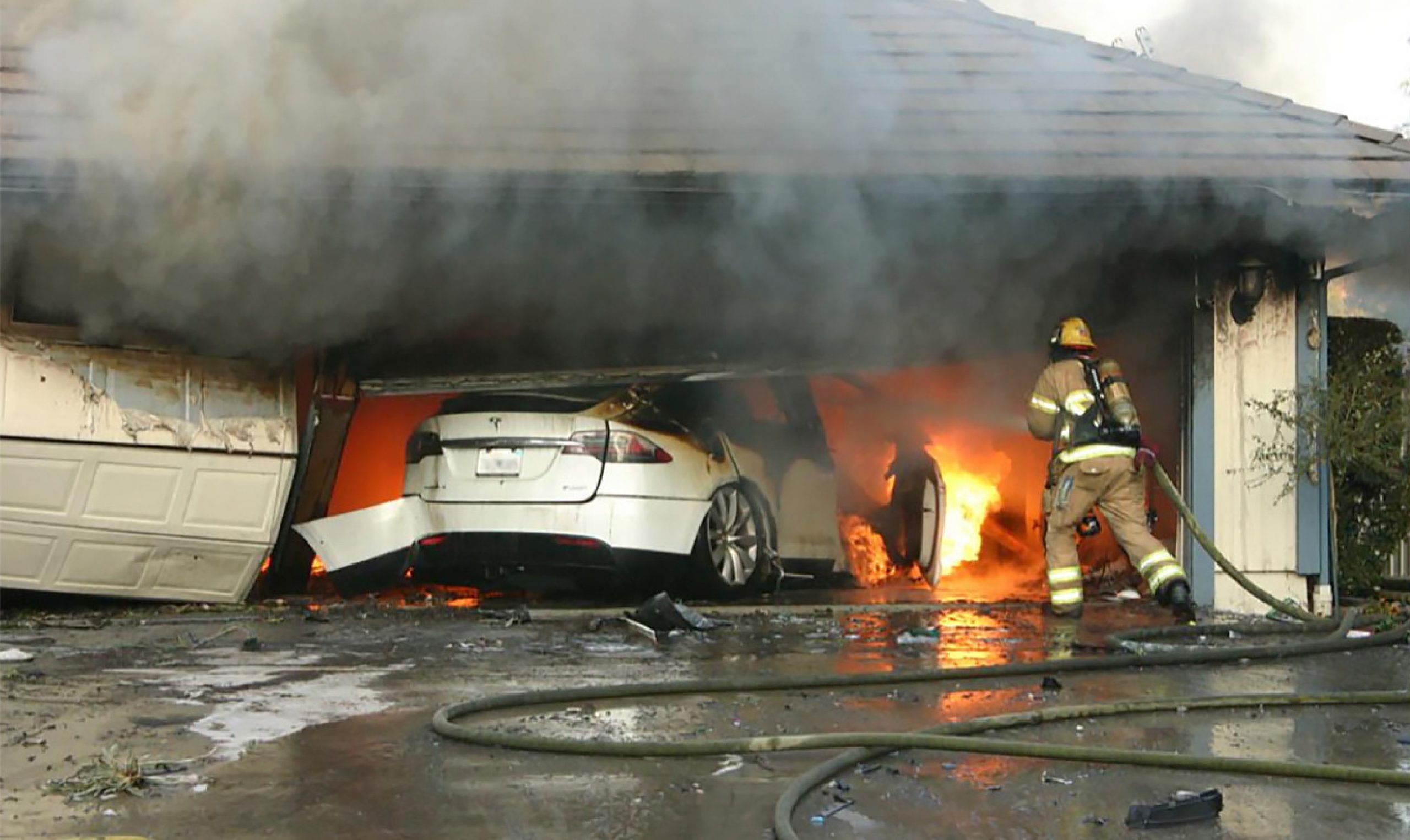Electric vehicles (EV) are no doubt here to stay. This is apparent from the exponential increase in sales of EV vehicles in Australia (and across the world) over the last decade, as well as state funded initiatives supporting zero emission vehicle’s strategies being rolled out nationally and a growing public infrastructure of EV charging points.

If you have seen footage of an EV fire, you are likely getting flashbacks of jet flames violently spewing from underneath the car while thick smoke spills over and engulfs the burning vehicle. If you have not, have a look at this video. Although this is not always the inevitable outcome of an EV fire, these types of fires can clearly grow quickly and violently and can be incredibly difficult to put out (and keep out!).
So how are emergency services tackling these challenging fires within the built environment?
Not all EV fires immediately result in vigorous and rapidly growing flaming combustion (which typically occurs as a result of thermal runaway of one or more battery cells). Often this stage is preceded by a smoking phase, followed by phases of thermal runaway and stabilised burning in turn. Thus, there can be periods prior to and in between stages of thermal runaway in which emergency responders can act to suppress, move, contain, access and ventilate the fire to mitigate the effects it may have on building occupants and the building itself.
Some of the ways fire brigades are tackling these fires include
- Submerging – For smaller EV’s such as electric motorbikes or mopeds, it may be possible to submerge the entire vehicle in a portable open top tank which can be erected within a building and filled using fixed firefighting systems such as hydrants or fire hose reels or using a brigade fire pumping appliance. Although possible in some cases, submerging larger EV’s within buildings may be more challenging (requirement for large tank and machinery) and likely more suited to an EV fire occurring in an outdoor setting.
- Flooding – To cool the damaged battery cells, firefighters may attempt to flood the battery pack with water or specialised extinguishing agents to suppress the fire. This may require use of further specialised firefighting equipment to puncture the battery pack from below the vehicle or through the vehicle cabin to enable effective flooding of the battery pack and avoid unnecessary damage to unaffected battery cells.
- Cool the outside of the battery pack – This is often recommended by EV battery pack manufacturers but there is little evidence to suggest that this provides effective suppression or control of an EV battery fire.
- EV Fire blankets – These blankets can quickly be thrown over the entire EV once firefighters arrive on the scene and provides effective containment of smoke and fire, reduces oxygen that can feed combustion, and provides valuable time to firefighters to undertake search and rescue operations as well as establishing desired ventilation and/or containment strategies.
- Ventilation – Smoke produced by an EV battery fire can be highly toxic to humans and can also be inflammable or present an explosion hazard. If fixed automatic smoke exhaust or natural ventilation is not provided (or insufficient) to serve the fire affected compartment, firefighters may use positive pressure ventilation (PPV) fans to ventilate the environment and to facilitate occupant egress and firefighting operations.
- Relocating the EV – Even once extinguished, battery fires can spontaneously reignite for a number of days following the initial fire event. As such, once firefighters have extinguished the EV fire (or during smoking or steady burning phases), the EV may be relocated using heavy machinery to remove the EV from the confines of the building until the EV can be safely quarantined at a suitable location.
- Allow to burn – Sometimes the quickest way to deal with an EV fire is to let it burn out. If the fire is beyond suppression and it is safe to do so, firefighters may choose to let the fire take its course.
It is also worth noting that in Queensland, the Queensland Fire and Emergency Service (QFES) have released a position statement on ‘Electric vehicle charging stations and electric vehicle carparks’ which encourages building designers and certifiers to consider implementation of mitigating measures for EV fire events including:
- Emergency shutdown controls for EV charging stations
- Easily located block plans that can tell intervening firefighters where EV charging stations, EV distribution boards and EV emergency shutdown controls are located
- Provision of vehicle impact protection (e.g. bollards) for EV charging stations
- Fire detection and early warning intercommunication systems
- Smoke management and air handling systems
- Fire hydrants
- Automatic fire sprinklers
- Fire resistance of surrounding construction
At Sotera we are committed to incorporating practical and cost-effective fire safety solutions in the early stages of project design. We would love the opportunity to assist with your project, so get in touch with us at either of our offices in Brisbane or Gold Coast.
Reference
- State of Electric Vehicles August 2021, Electric Vehicle Council, https://electricvehiclecouncil.com.au, Accessed 18/07/2022.
- Lithium Ion Battery Fires – Knowledge for Fire & Rescue Services, PerOla Malmquist, https://www.youtube.com/watch?v=m5Yf6E6_vEY, Accessed 18/07/2022.
- Queensland Fire and Emergency Services, Position Statement – Electric Vehicle Charging Stations and Electric Vehicle Carparks Version 04/2022, https://www.qfes.qld.gov.au/sites/default/files/2022-04/Electric-vehicle-charging-stations_0.pdf, Accessed 18/07/2022.

